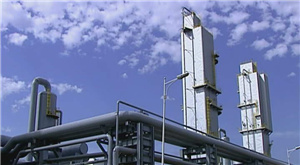Post-steel Tangshan
China.org.cn / chinagate.cn by Gao Yuan, September 28, 2014 Adjust font size:
“Tangshan was born with coal, but grew up with iron,” remark Tangshan residents to introduce their home.
In the first decade of the 21st Century, due to the city’s rich iron ore resources, well-established steel industry and plentiful skilled workers, Tangshan’s steel production capacity increased rapidly to millions of tons per year, accounting for an eighth of China’s total iron and steel output. In recent years, however, due to outdated technology, its products can barely compete in the market. Meanwhile, steel production requires massive amounts of energy and results in major pollution. Indeed, from January to October of 2013, Tangshan consistently ranked as one of China’s most polluted cities every month.
In October 2013, China’s State Council proposed to eliminate backward productivity. With regards to the steel industry, over five years, production capacity should be reduced by 80 million tons, 60 million of which come from Hebei Province. Tangshan’s production alone would decrease by 40 million tons. The same year, the State Council again emphasized reduction and management of outdated capacity in its Action Plan for Air Pollution Prevention and Control.
Disappearing Furnaces
In Tangshan, roads leading to dense steel-producing areas are especially bumpy after decades of traffic from heavily-loaded trucks. Before November 2013, Tangshan residents continued to be impressed by the surrounding steel factories, their tall smokestacks, shuttling trucks and occasional loud crashes. Only half a year later, many blast furnaces have been extinguished and truck traffic is noticeably lighter.
At the front gate of Banbidian Steel Plant, only red iron powder scattered along the road remains as evidence of the once bustling steel factory. “It has long been shut down,” remarks one of two guards as they sip tea and listen to Peking Opera. “Look, the equipment is for sale,” he continues, pointing to idle machines remaining in the plant.
It is easy to find similar scenes elsewhere in Tangshan where many steel plants once flourished. On November 24, 2013, the Hebei Provincial government carried out its “Sunday Campaign,” during which 10 blast furnaces and 16 converters of eight plants were demolished. Banbidian Steel Plant, founded in 1978, the same year of China’s reform and opening up, was formally closed. “Before the government took action, many small and medium-sized private steel factories had already stopped production,” adds the doorman.
State-owned steel plants also face unprecedented difficulties.
On June 30, 2008, reorganized from Tangshan Steel Plant, Hebei Iron & Steel Group was established. The same year, the group’s output ranked second in the country and fourth in the world. Six years later, the plant still stands on a major thoroughfare of Tangshan, but its glory faded as its employees’ incomes dropped and its talent moved elsewhere.
Two decades ago, working in Tangshan Steel Plant was an honor for locals, ensuring both stable employment and then-lucrative income. Now, things are different. The employee exodus peaked in 2013, according to Zhang Wenjun, who has worked in the plant for 25 years. “They left for private steel plants in southern China, where they could earn 10,000 yuan ($1,600) per month, compared to only 3,000 yuan ($480) here.”
In addition, a downturn of steel market and Tangshan’s decrease in output negatively impacted not only on steel enterprises, but also related sectors like logistics and steel rolling.
Painful Transition
“Tangshan can boast of its large output of steel but not the quality of its products,” conceded Tangshan mayor Chen Xuejun, after assuming the position in summer 2013. “The city’s steel industry is stuck at a difficult turning point, ready for a painful transitional period.”
In 2014, Tangshan reduced its iron-processing capacity by 4.13 million tons, steel-producing capacity by 10.82 million tons and cement capacity by 4.85 million tons, a task highlighted in Tangshan’s 2014 report on work of the municipal government. “In the past, some plants reopened shortly after they were shut down,” remarks Bian Mingjiang, director of Industries Coordination Department at Tangshan Municipal Development and Reform Commission. “This time, along with small furnaces, blast furnaces as big as 450 cubic meters were also demolished to prevent their future operation. This evidences the government’s resolution to eradicate excess capacity and prevent air pollution. In future, blast furnaces with capacity less than 1,000 cubic meters and converters with capacity less than 60 tons will also be eliminated.”
Actually, employment was the first problem facing the government. If Tangshan completed the 40-million-reduction task, tens of thousands of workers would be left out of work. Tangshan Steel Company, a branch of Hebei Iron & Steel Group, has established 22 non-steel firms involving industries such as LED manufacturing, logistics and information automation as well as liquefied natural gas. It promised new positions for laid-off employees with improved working conditions, welfare and status.
“In the economic and social transitional period after shutting down steel plants, administrative orders don’t work any more,” explains Li Xinchuang, president of China Metallurgical Industry Planning and Research Institute (MPI). “A withdrawal mechanism for steel plants should be developed only after taking factors like employment, finance and revenue into account.”
Even though Tangshan greatly cut its steel capacity over time, iron and steel production remains one of five pillar industries of the city. Major steel enterprises still need to forge ahead with reform. According to Bian, Tangshan will adjust its industry in four directions in the future: steel processing, equipment manufacturing, petrochemical engineering and strategic emerging industries.


